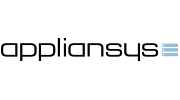Which of the following is true about a LAN-connected TCP/IP host and its IP routing (forwarding) choices?
Correct!
Wrong!
Which protocol finds an unknown Layer 2 address from a known IP address?
Correct!
Wrong!
Which option correctly list the addresses covered by the indicated address class?
Correct!
Wrong!
PC1 and PC2 are on two different Ethernet LANs that are separated by an IP router. PC1’s IP address is 10.1.1.1, and no subnetting is used. Which of the following addresses could be used for PC2?
Correct!
Wrong!
All IP addresses that begin with 186.72 would be considered part of which address class?
Correct!
Wrong!
Which of the following is a valid Class C IP address that can be assigned to a host?
Correct!
Wrong!
Which of the following is function of OSI Layer 3 protocols?
Correct!
Wrong!
Which of the following does a router normally use when making a decision about routing TCP/IP packets?
Correct!
Wrong!
Which of the following is function of a routing protocol?
Correct!
Wrong!
A company implements a TCP/IP network, with PC1 sitting on an Ethernet LAN. Which of the following protocols and features requires PC1 to learn information from some other server device?
Correct!
Wrong!
What is the assignable range of values for the first octet for Class A IP networks?
Correct!
Wrong!
Imagine a network with two routers that are connected with a point-to-point HDLC serial link. Each router has an Ethernet, with PC1 sharing the Ethernet with Router1 and PC2 sharing the Ethernet with Router2. When PC1 sends data to PC2, which of the following is true?
Correct!
Wrong!
Which option correctly list the addresses covered by the indicated address class?
Correct!
Wrong!
Fundamentals of IPv4 Addressing and Routing
Results
Share your Results:





